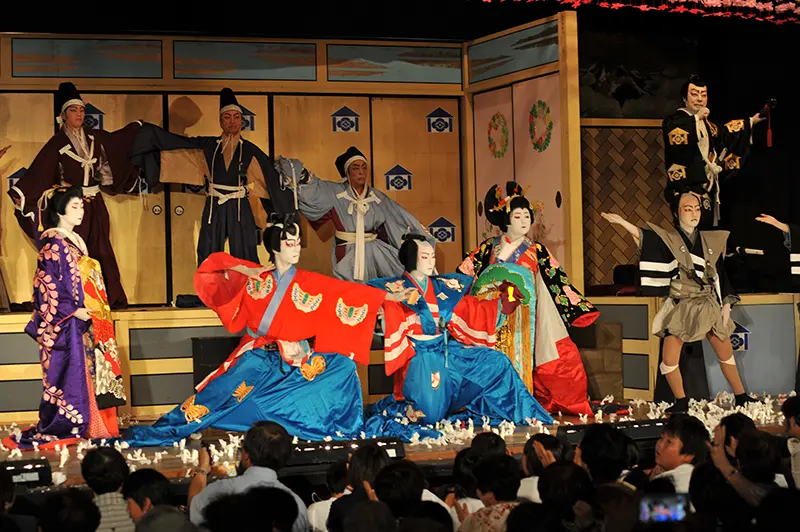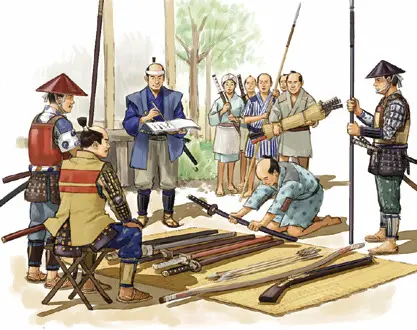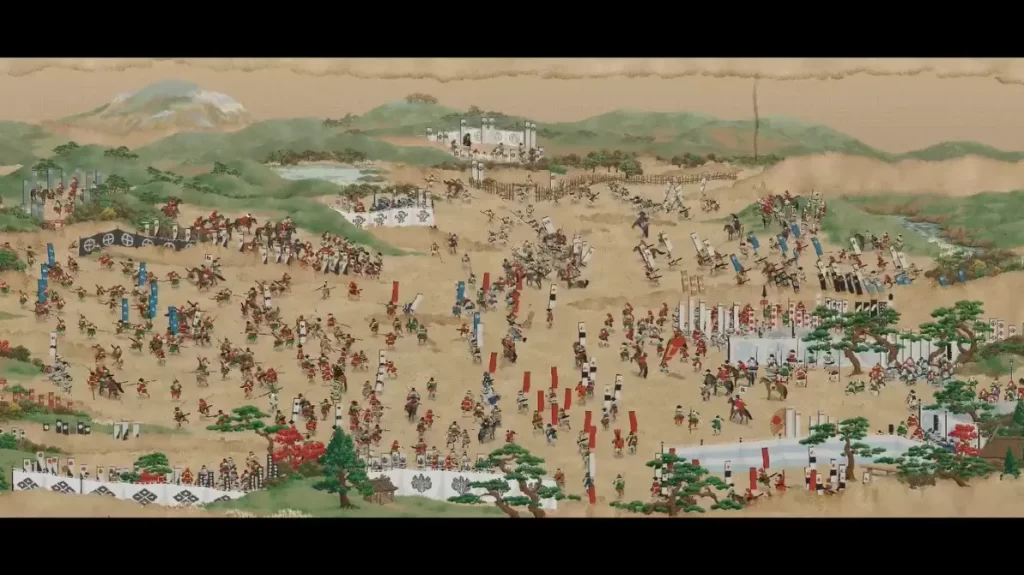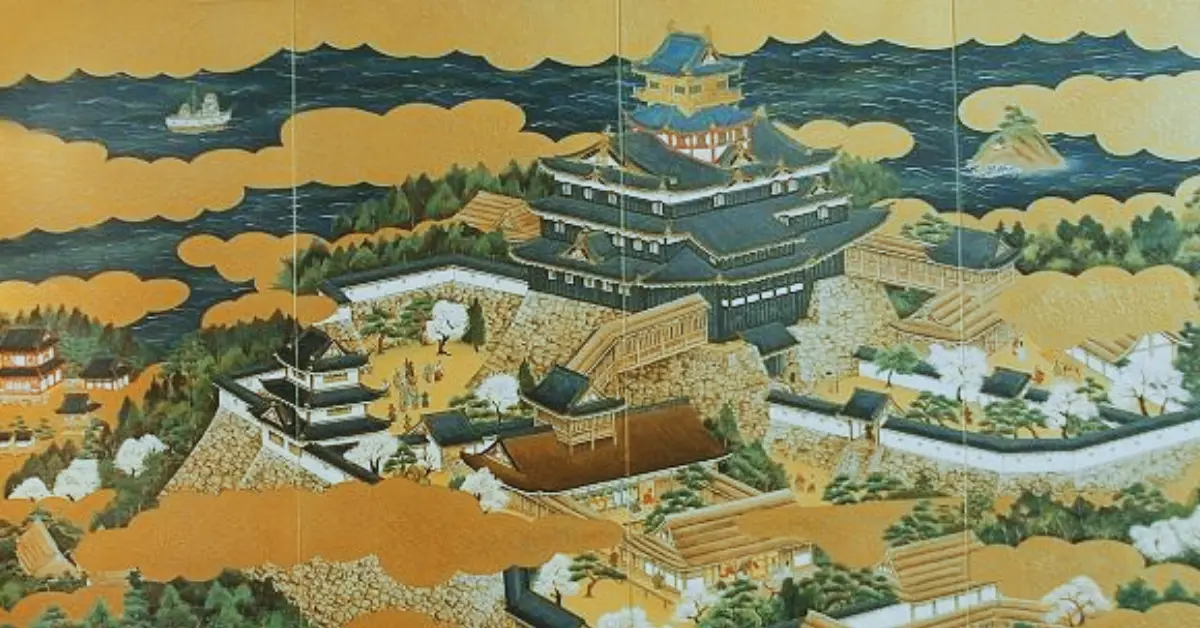The Azuchi-Momoyama period, from 1573 to 1603, witnessed a pivotal transformation in Japan’s history. This era marked the end of the divisive Sengoku period and the dawn of unification under a central authority.
Through the military prowess and strategic acumen of key figures such as Oda Nobunaga, Toyotomi Hideyoshi, and Tokugawa Ieyasu, Japan’s disparate feudal states were consolidated.
Explore the climactic battles and power shifts that led to the Tokugawa shogunate’s rise and Japan’s unification.
Key Takeaways
- The Azuchi-Momoyama period was instrumental in unifying Japan. It ended the Sengoku era’s constant conflict.
- Oda Nobunaga, Toyotomi Hideyoshi, and Tokugawa Ieyasu were pivotal leaders. Their campaigns and policies led to centralization of power.
- Cultural developments flourished during this time. Tea ceremonies, ikebana, and kabuki theater gained prominence.
- Key battles like Sekigahara and the Siege of Osaka solidified Tokugawa’s control. They marked the end of opposition to unification.
- The period set the stage for the stable Edo era. It was a time of both internal consolidation and external ambition, evidenced by the Imjin War.
Brief Overview of the Azuchi-Momoyama Period (1336-1573)
The Azuchi-Momoyama period was a transitional era that lasted from around 1573 to 1603. This period marked the end of the Sengoku, or “Warring States,” era. It paved the way for the unification of Japan under a single ruler after over a century of conflict among various feudal lords, known as daimyo.
Two dominant figures emerged during this period: Oda Nobunaga and his successor, Toyotomi Hideyoshi. Both were crucial in the efforts to unify Japan.
Nobunaga began the process by capturing Kyoto and establishing his power. Hideyoshi continued the campaign for unification after Nobunaga’s death.
But it was Tokugawa Ieyasu, an ally of Nobunaga and Hideyoshi, who finally secured control of Japan and set up the Tokugawa shogunate.
Azuchi-Momoyama Period Society and Culture
Society during the Momoyama period was vibrant and dynamic. The relative peace brought by the unification process supported a cultural renaissance.
Traditional arts like tea ceremonies, ikebana, and Noh theater flourished. A new form of drama, kabuki, began to emerge. The Karesansui (rock gardens) and folding screens became popular in architecture and interior design.
This period also saw the rise of the Kanō school of painting, known for blending Chinese painting practices with the more expressive Japanese aesthetic.
Sen no Rikyū, a significant figure in the tea ceremony, refined the tea practice into art.

Unification of Japan
The unification of Japan was a complex and drawn-out process that began with Nobunaga’s military campaigns. After a significant victory at the Battle of Okehazama, Nobunaga established his base at Azuchi Castle on Lake Biwa.
Following Nobunaga’s assassination in the Honnō-ji Incident by Akechi Mitsuhide, Toyotomi Hideyoshi avenged his lord at the Battle of Yamazaki. Hideyoshi then rose to power, becoming the Kampaku, or imperial regent. His most notable achievements were the Kyushu campaign, the sword hunt, and the Siege of Odawara, which helped consolidate his control over Japan.

After Hideyoshi’s death, the Council of Five Elders was established to govern in the name of his young son. However, Tokugawa Ieyasu, a member of the council, gained the upper hand.
The decisive Battle of Sekigahara in 1600 saw Ieyasu’s victory over his rivals. This victory effectively sealed the unification of Japan under the Tokugawa shogunate.
Key Clashes and Conflicts
Among the pivotal samurai battles was the Battle of Nagashino in 1575. This clash was significant for Nobunaga’s strategic use of arquebuses, a type of matchlock gun. With this technological advantage, the Oda forces decimated the Takeda clan’s cavalry charges, led by Takeda Shingen’s son, Takeda Katsuyori.
The victory at Nagashino shattered the power of the Takeda clan and showcased Nobunaga’s innovative approach to warfare.
Other key battles, such as the Battle of Mikatagahara and the Siege of Osaka, further highlighted the intense military conflicts that characterized the period’s push toward unification.
The final Battle of Sekigahara was a major clash between Ishida Mitsunari’s 80,000-strong Western Army and Ieyasu’s 74,000-strong Eastern Army.

Transition to the Edo Period
Following his victory at the Battle of Sekigahara, Tokugawa Ieyasu swiftly undertook the task of restructuring Japan’s feudal landscape. He redistributed lands to his loyal vassals, thereby rewarding those who had supported him. This move not only solidified his authority but also reshaped the power dynamics among the daimyo.
On March 24, 1603, in a significant ceremonial endorsement, Emperor Go-Yōzei bestowed upon Ieyasu the title of shogun. At 60 years of age, Ieyasu had outlived many formidable contemporaries, such as Oda Nobunaga and Takeda Shingen.
As shogun, he focused on laying the foundations of the Tokugawa shogunate. His efforts in establishing a regime that would bring enduring peace and stability to Japan set the stage for the flourishing Edo period.
Frequently Asked Questions
What was the Azuchi-Momoyama period known for?
The Azuchi-Momoyama period was known for the unification of Japan. It featured a cultural renaissance in arts and architecture.
Who were the key figures of the Azuchi-Momoyama Period?
Key figures of the Azuchi-Momoyama Period were Oda Nobunaga, Toyotomi Hideyoshi, and Tokugawa Ieyasu. They led decisive campaigns and strategic governance which brought Japan together.
How did the Azuchi-Momoyama period contribute to the unification of Japan?
This period contributed to Japan’s unification through military conquests and political alliances. The power of regional daimyo was subdued, leading to centralized rule.
How did the Azuchi-Momoyama period impact Japanese art and architecture?
Japanese art and architecture saw significant innovation during the Azuchi-Momoyama period. Tea ceremonies, ikebana, and the construction of grand castles reflected the era’s aesthetic evolution.
What was the significance of the Azuchi and Momoyama castles?
Azuchi and Momoyama castles symbolized the power and wealth of their lords, Nobunaga and Hideyoshi. They represented the architectural grandeur of the time.
What led to the end of the Azuchi-Momoyama Period?
The end of the Azuchi-Momoyama Period came with the Battle of Sekigahara in 1600. It led to the Tokugawa shogunate’s establishment, marking the Edo period’s beginning.
Further Reading
- The Cambridge History of Japan: Volume 3 (Medieval Japan)


